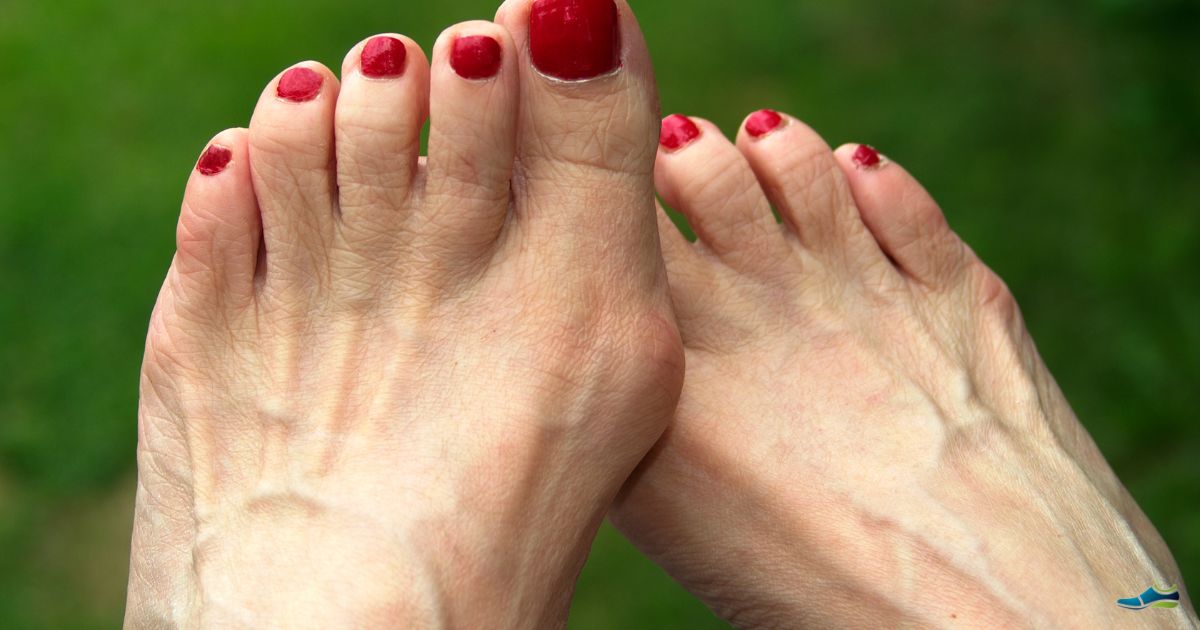A bunion, medically known as hallux valgus, is a bony bump that forms on the joint at the base of the big toe. Over time, the big toe shifts towards the second toe, causing the joint to push outward and become misaligned. This often results in pain, swelling, and difficulty wearing shoes—especially those with a narrow toe box.
Looking for a more personal and eye-opening take on bunions? Don’t miss our truthful guide to bunions and footwear.
What Causes Bunions?
- Genetics: Inherited foot structure, like flat feet or loose joints, can increase your risk.
- Foot Shape: Biomechanical issues, such as fallen arches or overpronation, worsen bunion development.
- Medical Conditions: Conditions like arthritis, particularly rheumatoid arthritis, can accelerate bunion formation.
- Foot Injuries: Repeated stress or trauma can lead to joint misalignment over time.
- Poor Footwear: Tight, narrow, or high-heeled shoes place pressure on the toes, encouraging deformity.
Common Symptoms of Bunions
- A prominent, bony bump on the side of the big toe joint
- Swelling, redness, and soreness around the joint
- Persistent or intermittent foot pain
- Limited movement in the big toe
- Corns or calluses where the first and second toes rub together
- Difficulty finding comfortable footwear
Why Wider-Fitting Shoes Matter for Bunions
Standard shoes can cause undue pressure to a bunion on the foot, leading to inflammation and pain. That’s why wide-fitting shoes are often the first line of defence for people with bunions. They allow your toes more room to move freely and reduce friction around the affected joint.
Look for Shoes With:
- An extra-wide toe box to minimise crowding
- Stretchable uppers (e.g., soft leather, mesh, or knitted materials)
- Low or zero-drop heels to ease pressure on the forefoot
- Cushioned midsoles for extra comfort
- Adjustable fastenings (Velcro or laces) to ensure a secure fit
How to Treat and Manage Bunions Without Surgery
While surgery can correct severe bunions, most people benefit from conservative management first. Here’s how to manage bunion pain and progression at home:
- Wear proper footwear: Choose supportive, wide-fitting shoes with enough toe space.
- Use bunion pads or gel shields: These cushion the joint and prevent shoe friction.
- Try orthotics: Custom or over-the-counter inserts can correct abnormal foot mechanics.
- Apply ice and anti-inflammatory cream: This helps reduce pain and swelling.
- Perform foot exercises: Strengthening and stretching the toe and arch muscles can help alignment.
- Toe spacers or splints: These help realign the big toe, especially when worn overnight.
When to Consider Bunion Surgery
If your bunion pain is severe, persistent, and interferes with daily activities despite using all the usual treatments, surgery may be the next step. There are different surgical procedures to realign bones, remove swollen tissue, and correct deformity. Recovery varies by procedure but may take 6 to 12 weeks.
In Summary
- Bunions are bony protrusions at the base of the big toe caused by joint misalignment.
- They develop gradually due to genetics, poor footwear, and underlying conditions.
- Wide-fitting, cushioned shoes reduce friction and pressure, helping manage pain.
- Conservative treatments like orthotics, pads, and stretches can often delay or avoid surgery.
FAQs
Q: Can bunions go away on their own?
A: No, bunions do not go away without treatment. While symptoms can be managed, the structural changes in the foot are typically permanent unless corrected surgically.
Q: Are bunions always painful?
A: Not always. Some people have bunions without any discomfort, while others may experience severe pain, especially with tight footwear.
Q: What are the best shoes for bunions?
A: Look for wide-fitting shoes with a roomy toe box, soft uppers, cushioning, and minimal heel height. Adjustable straps or laces help ensure a snug but pressure-free fit.
Q: How can I prevent bunions from getting worse?
A: Avoid narrow or high-heeled shoes, wear supportive footwear, use orthotics, and perform regular foot exercises to maintain joint flexibility and alignment.
Q: When is bunion surgery necessary?
A: If conservative treatments no longer relieve pain and the bunion affects your ability to walk or wear shoes comfortably, a foot surgeon may recommend corrective surgery.
- A Bunion on the foot is a painful bony deformity that worsens with tight shoes.
- Causes include genetics, foot structure, and poor footwear.
- Symptoms can include joint misalignment, swelling and severe pain.
- Wide-fitting shoes with a roomy toe box are essential.
- Supportive footwear, orthotics, and exercises can all reduce pain and prevent progression.

